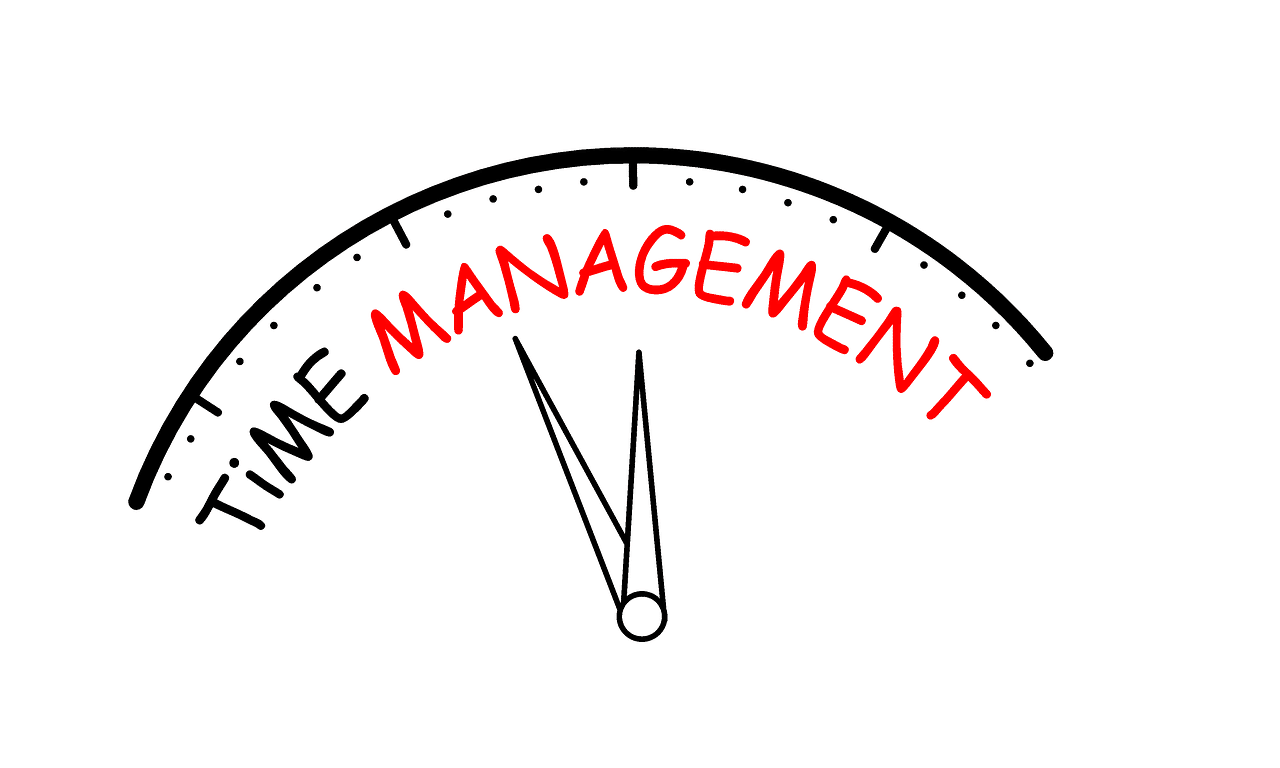Multi-day conference planning can be daunting for any corporate event planner, but it doesn’t have to be. With the right strategies and modern tools, you can create a NYC event that is both engaging and memorable. Whether you’re organizing a business conference, a trade show, or a networking event, this guide will provide you with must-know insights and tips to plan a successful multi-day conference.
This comprehensive guide delves into the effective strategies that elevate multi-day conferences from good to extraordinary. From the initial steps of venue selection to the intricacies of post-event follow-up, we’ll explore every facet of successful planning.
Mastering the Art of Multi-Day Conference Planning: A Symphony of Details
In the dynamic world of professional gatherings, multi-day conferences are beacons of knowledge exchange, networking, and collaboration. However, orchestrating a seamless event that captivates attendees and achieves its goals requires a meticulous harmony between planning and execution.
From finding the right NYC venue to creating an agenda, here is everything you need to know to make your multi-day event successful.
1. The Foundation: Detailed Venue Selection
Selecting the right New York venue is akin to laying the cornerstone of a successful multi-day conference. It’s about creating a conference environment that fosters engagement and collaboration. Begin by considering the size of your audience and the nature of your event. A more intimate setting might enhance networking opportunities, while a larger venue could accommodate expansive educational sessions.
Once you’ve identified potential venues, go beyond aesthetics. Consider the technical infrastructure, accessibility, and unique features aligning with your conference theme. Ensure the venue seamlessly supports your program’s technical demands, from audiovisual needs to high-speed internet access. A thorough venue checklist is your compass in navigating the landscape of possibilities.
2. Crafting the Conference Program: Balancing Education and Networking
The heart of any multi-day conference lies in its program—a carefully curated schedule that blends educational content with ample networking opportunities. Striking the right balance ensures attendees leave with new knowledge, valuable connections, and insights from their peers.
When crafting the program, consider your audience’s diverse interests and preferences. Offer a mix of keynote speakers, panel discussions, and interactive workshops to cater to varying learning styles. Incorporate dedicated networking breaks, roundtable discussions, and social events to create a dynamic atmosphere that encourages collaboration and relationship-building.
Multi-day conference planning requires a delicate blend of creativity, strategy, and meticulous attention to detail. At the core of this endeavor lies the art of crafting captivating programs that resonate with your audience. In this exploration, we’ll delve into the key elements and strategies to ensure your conference program is informative and an engaging experience that leaves a lasting impression.
Understanding Your Audience: The Compass of Multi-Day Conference Planning
The first step in program creation is understanding your audience—what they seek, their interests, and the diversity of their preferences. Your attendees are the driving force behind the success of your conference, and tailoring your program to meet their expectations is paramount.
Consider conducting surveys or engaging with potential participants through focus groups to gather insights. What topics are they passionate about? Are they seeking in-depth workshops, lively panel discussions, or thought-provoking keynote sessions? By aligning your program with the needs and desires of your audience, you set the stage for a conference experience that resonates with every participant.
Striking the Right Balance: Educational and Networking Opportunities
A well-rounded conference program balances educational content and networking opportunities harmoniously. Attendees crave the chance to connect with like-minded professionals, fostering relationships that extend beyond the conference walls.
Incorporate a mix of keynote speakers and experts in their fields who can inspire and educate. Panel discussions bring diverse perspectives to the forefront, while workshops provide hands-on learning experiences. Intersperse these educational sessions with dedicated networking breaks, allowing participants to exchange ideas and build meaningful connections. The synergy between educational and networking elements creates a dynamic and fulfilling conference program.
Navigating Logistics: The Backbone of Seamless Programs
While the content of your program steals the spotlight, the logistics behind its execution form the unyielding backbone. Smooth transitions between sessions, efficient use of time, and clear communication contribute to an overall seamless experience for attendees.
Create a detailed schedule for breaks, meal times, and logistical considerations. Ensure that speakers are well-prepared and understand the flow of the program. Utilize technology to streamline registration and session tracking, minimizing disruptions. By mastering the logistical intricacies, you pave the way for a program that unfolds effortlessly, allowing participants to immerse themselves fully in the content.
Engaging Formats: Beyond Traditional Lectures
Conference attendees appreciate programs that break free from traditional lecture formats in a world saturated with information. Embrace diverse presentation styles to keep your audience engaged and energized throughout the event.
Consider incorporating interactive elements like Q&A sessions, live polls, and audience participation. Breakout sessions or roundtable discussions provide smaller, more intimate settings for in-depth exploration of specific topics. Don’t avoid innovative formats like fireside chats, lightning talks, or experiential workshops. A varied program keeps attendees on their toes, eager to discover what each session offers.
Thematic Threads: Creating a Cohesive Narrative
A multi-day conference is a narrative unfolding over time, and the threads of this narrative should weave seamlessly throughout your program. Establish a thematic structure that guides attendees on a cohesive journey, from the opening keynote to the closing remarks.
Align sessions and topics under overarching themes that resonate with your conference’s purpose. This thematic cohesion enhances the overall experience and facilitates a deeper understanding of the conference’s central message. Whether it’s a progressive exploration of industry trends or a thematic focus on innovation, a well-structured program ensures that each session contributes to the larger narrative.
Embracing Flexibility: Responding to Participant Needs
While a well-structured program is essential, it’s equally important to embrace flexibility. Attendees may express a need for further exploration of certain topics, or unexpected industry developments may arise during the conference. Be prepared to adapt and respond to participant needs in real-time.
Incorporate open spaces in your schedule for impromptu discussions or additional sessions based on attendee feedback. Utilize mobile apps or other communication channels to gather instant feedback and adjust as needed. A flexible approach demonstrates responsiveness and ensures your program remains relevant and engaging.
3. Managing Logistics: The Devil in the Details
The devil, they say, is in the details, and nowhere is this truer than in the realm of multi-day conference logistics. From attendee registration to transportation coordination, every logistical element requires meticulous planning to ensure participants’ smooth and stress-free experience.
Streamline the registration process with user-friendly online platforms, allowing attendees to sign up, select sessions, and receive important updates effortlessly. Consider transportation options for out-of-town participants, providing clear information on nearby hotels and convenient travel routes. Seamless logistics contribute to a positive conference experience, leaving attendees focused on the content rather than the hassles.
4. Engaging Attendees: From Passive Observers to Active Participants
An effective multi-day conference transcends the traditional model of passive attendees absorbing information. Transform your audience into active participants by integrating engaging elements throughout the event. Utilize technology to encourage real-time interaction, such as live polls, Q&A sessions, and virtual networking opportunities.
Create designated spaces for collaboration, both physical and virtual. Establish interactive exhibition areas where attendees can explore new products, services, and innovations. Foster a sense of community through dedicated online platforms where participants can connect before, during, and after the conference. By making engagement a priority, you elevate the overall conference experience, leaving a lasting impression on attendees.
5. Extended Events, Extended Success: Strategies for Long-Duration Conferences
Extended multi-day conferences present unique challenges, requiring different strategies to maintain momentum and participant engagement. Break the event into manageable segments, each with its theme or focus, to prevent attendee fatigue. Provide ample breaks and downtime to allow for networking and rejuvenation.
Consider incorporating wellness elements into your program, such as yoga sessions, mindfulness breaks, or fitness activities. These contribute to the overall well-being of attendees and inject a refreshing and energizing dynamic into the conference atmosphere. Additionally, offers flexible attendance options for virtual participation, allowing remote attendees to experience the conference without travel constraints.
6. Mastering the Budget: Financial Planning for Successful Multi-Day Conferences
Planning a multi-day conference is akin to orchestrating a grand symphony. At the heart of this symphony lies the budget—a composition that requires precision, foresight, and a keen understanding of financial nuances.
Before diving into the intricacies of budgeting, it’s essential to set the stage with preliminary considerations. Start by defining the event services scope and objectives of your conference. What are your key goals, and how will they translate into budgetary requirements? Consider the size and preferences of the audience, the duration of the event, and the overall experience you aim to deliver.
Create a comprehensive list of all potential conference expenses, from venue costs and speaker fees to catering, promotional materials, and technological requirements. This initial event planning groundwork lays the foundation for a realistic and detailed budget that encapsulates all facets of your multi-day conference.
Allocating Resources Strategically
Effective budgeting requires strategic allocation of resources. Divide your budget into key categories, allowing for a clear understanding of where funds will be directed. Common categories include venue and logistics, speaker and entertainment fees, marketing and promotion, technology and equipment, and miscellaneous expenses.
Within each category, prioritize expenses based on their impact on the conference’s success. Allocate a percentage of your budget to contingency funds, acknowledging that unforeseen costs may arise. By strategically directing resources, you ensure that every dollar spent contributes meaningfully to the overall success of your multi-day event.
Sponsorships, Registrations, and Beyond
Good budgeting requires optimizing income streams. Identify potential sources of revenue to offset conference costs and even generate a surplus. Sponsorships are a powerful avenue—reach out to industry partners willing to support your event in exchange for exposure and branding opportunities.
Set realistic registration fees that reflect the value of your conference. Consider offering tiered pricing options to accommodate various budget constraints. Explore additional revenue streams, such as exhibitor fees, merchandise sales, or exclusive access packages. A diversified approach to income ensures financial stability and enhances the overall sustainability of your multi-day conference.
The Art of Negotiation: Navigating Vendor Contracts
Negotiation is a skillful dance that can significantly impact your budget. When dealing with vendors, from venues to caterers and technology providers, approach negotiations with a clear understanding of your budgetary constraints and objectives.
Seek multiple quotes and leverage competitive pricing to your advantage. Negotiate favorable payment terms and explore opportunities for value-added services. Be transparent about your budget limitations, and don’t hesitate to inquire about discounts or special packages. The art of negotiation is about finding a balance that aligns with your financial goals while maintaining quality standards.
The Balancing Act: Contingency Planning
In multi-event event planning, surprises are inevitable. A speaker may have last-minute travel changes, or technology glitches might require swift solutions. Incorporating a contingency plan within your budget is akin to a safety net—a financial buffer that can absorb unexpected expenses without derailing the entire production.
Allocate a percentage of your NYC conference budget specifically for contingencies. This reserve ensures you have the flexibility to address unforeseen challenges without compromising the overall quality of your multi-day conference. A well-planned contingency fund is a prudent financial strategy that transforms potential setbacks into manageable bumps on the road to success.
Transparency and Communication: Building Trust
Transparent communication regarding your budget is good practice and essential for building trust with stakeholders. Keeping everyone informed fosters transparency and accountability, whether it’s sponsors, attendees, or team members.
Share budget highlights in promotional materials to showcase financial responsibility. Provide regular updates on spending and income throughout the planning process. If adjustments are necessary, communicate the reasons behind them openly. Building trust through transparent financial practices enhances your credibility and reinforces confidence in the success of your multi-day conference.
Post-Event Financial Review
As the curtain falls on your multi-day conference, the financial journey continues with a thorough post-event financial review. Evaluate actual expenses against budgeted amounts, identifying areas of overspending or potential savings. Analyze revenue streams, assessing the effectiveness of sponsorships, registration fees, and additional income sources.
Gather feedback from your conference planning team and stakeholders to identify lessons learned and areas for improvement. Documenting this post-event financial review becomes a valuable resource for future conferences, enabling you to refine your budgeting strategies and enhance economic efficiency.
7. Beyond the Curtain: Post-Event Follow-Up for Lasting Impact
As the final curtain falls on your multi-day conference, the opportunity for impact extends into the post-event phase. A well-thought-out post-event strategy ensures that the knowledge gained and connections made continue reverberating long after participants leave the venue.
Promptly share presentation materials, recordings, and any additional resources with attendees. Gather feedback through surveys to assess the conference’s strengths and areas for improvement. Leverage social media and online platforms to maintain the conversation, encouraging participants to share insights and continue networking. A thoughtful follow-up strategy enhances attendee satisfaction and lays the groundwork for future conferences and collaborations.
FAQs on Organizing Multi-Day Conference
How do I choose the right venue for a multi-day conference?
A1: Selecting the ideal venue is a crucial aspect of multi-day conference planning. Start by considering your event’s size, location preferences, and required amenities. Look for venues with sustainability certifications like LEED to align with eco-friendly practices. Virtual or hybrid options can also be explored to reduce the environmental impact and accommodate a broader audience.
What strategies can I employ to minimize food waste during the conference?
Minimizing food waste is a commendable goal in conference planning. Work closely with your catering team to create a menu based on local, seasonal, and organic ingredients. Implement careful portion control and consider incorporating a donation program for leftover food. You can contribute to a greener and more responsible event by prioritizing sustainability in your catering choices.
How can I ensure effective waste management throughout the conference?
Effective multi-day event waste management is essential for a sustainable conference. Implement a robust recycling program and collaborate with waste management partners specializing in eco-friendly practices. Consider digital alternatives to printed materials, reducing paper waste. Mark recycling stations throughout the venue, making it easy for attendees to participate in waste reduction efforts.
What are some engaging ways to involve attendees in the sustainability aspect of the conference?
Engaging attendees in sustainability initiatives can enhance the overall conference experience. Provide information on eco-friendly commuting options, encourage carpooling, and offer incentives for sustainable practices. Incorporate interactive elements like sustainability workshops, showcase eco-friendly products, and create networking spaces highlighting the importance of green practices. Making sustainability a shared experience enhances attendee satisfaction and promotes environmental awareness.
What long-term benefits can my company expect from hosting a sustainable multi-day conference?
Hosting a sustainable conference goes beyond immediate gains. It can positively impact your company’s image, attracting like-minded partners and clients who value environmental responsibility. Attendees are likely to remember and appreciate events that prioritize sustainability, leading to increased satisfaction and loyalty. Embracing green practices in multi-day conference planning is a strategic move that pays off in terms of brand perception, stakeholder relations, and long-term success.
Conclusion: Multi-Day Conference Planning
Multi-day conference planning requires meticulous attention to detail. Every detail contributes to the event’s success, from selecting the right venue to crafting an engaging program, managing logistics, and fostering attendee engagement.
Remember to focus on your attendees’ needs, communicate effectively, and stay organized throughout the planning process. With these essential insights and tips, you have everything you need to plan a successful multi-day conference.
Are you an event planning expert who wants to expand connections? Join thousands of top industry professionals for three days of networking, learning, and growing at The Event Planner Expo! Get tickets for NYC’s premier event conference and reserve your exhibitor booth for showcasing your brand at the event.









